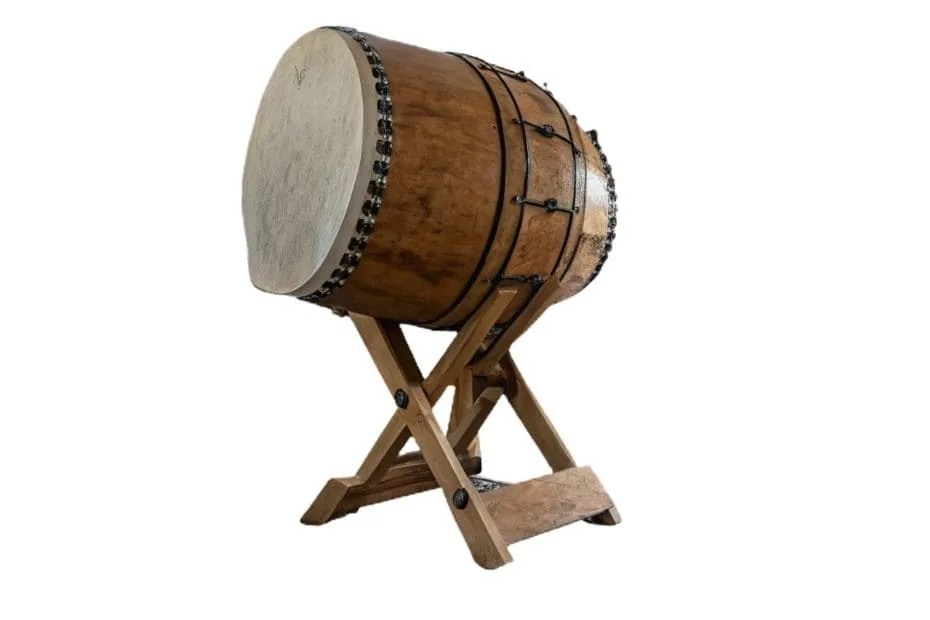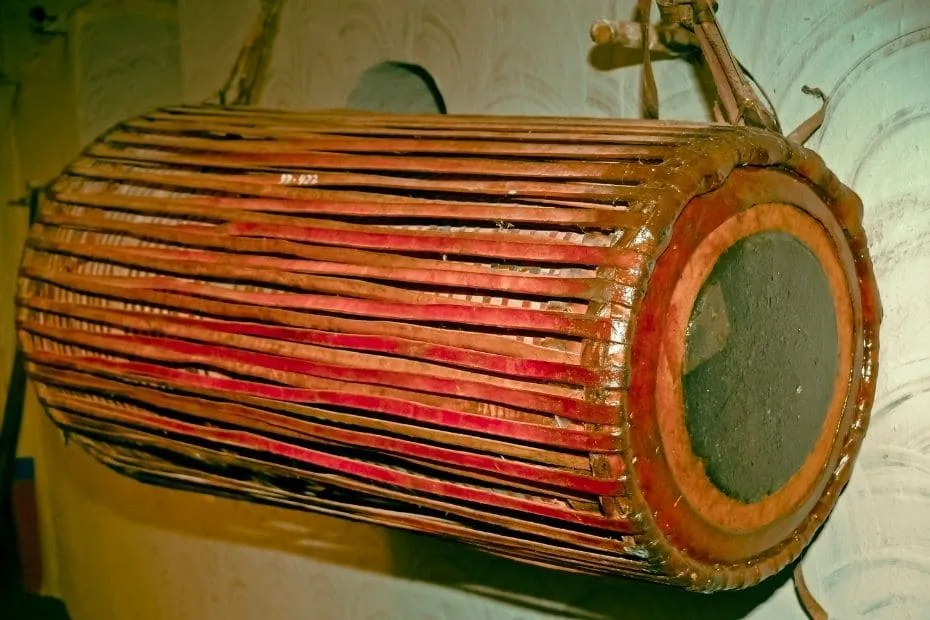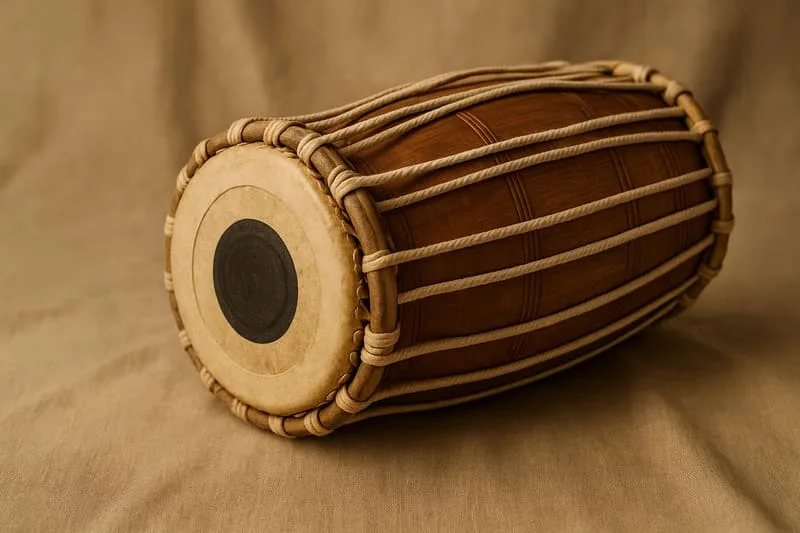Taiko: The Thunderous Heartbeat of Japanese Drumming
Few instruments capture power, precision, and community spirit like the taiko. From ancient festivals to contemporary stages, these Japanese drums have evolved into a global performance art—blending rhythm with choreography, culture with athleticism. Whether you’re a performer, educator, or an enthusiast looking to buy your first drum, this guide breaks down the essentials of taiko history, types, sizes, construction, technique, and buying tips in a clear, practical way.
Quick Features Overview
| Type | Typical Size (Ø × Depth) | Shell & Head | Tuning | Primary Sound & Use | Portability |
|---|---|---|---|---|---|
| Nagado-daiko | 45–70 cm (18–28″) Ø × 50–90 cm | One-piece carved wood; cowhide tacked | Fixed (non-tunable) | Warm, full-bodied; core ensemble voice | Medium |
| Odaiko | 90–160 cm (36–63″+) Ø × 60–120 cm | Massive carved shell; cowhide tacked | Fixed (non-tunable) | Earth-shaking bass; climactic solos | Low |
| Shime-daiko | 30–33 cm (12–13″) Ø × 16–18 cm | Thick shell; cowhide rope/bolt tension | Fully tunable | High, cutting attack; timekeeping | High |
| Okedo-daiko | 33–66 cm (13–26″) Ø × variable | Stave shell; rope tension heads | Adjustable (rope) | Bright, resonant; versatile staging | High |
What Is Taiko? A Brief History
Taiko (also called wadaiko) encompasses both the drums and the performance tradition. Historically, taiko appeared in court music, Buddhist temples, Shinto festivals, and rural celebrations—signaling time, summoning communities, and energizing ritual. The modern ensemble style, kumi-daiko, was pioneered in the 1950s by Oguchi Daihachi, then propelled to international stages by groups like Kodo. Today, taiko fuses traditional rhythms with contemporary choreography, showcasing stamina, unity, and the unmistakable “thunder” of big drums.
Main Types of Taiko and Their Roles
Nagado-daiko (Barrel Drum)
The nagado-daiko is the ensemble’s backbone. Carved from a single log (often zelkova), its tacked cowhide heads produce a warm, projecting tone with powerful low-mids. Common diameters are 18–24 inches for general use and up to 28 inches for deeper resonance. Because the heads are fixed, tuning changes are limited; players shape pitch with stroke placement and muting.
Odaiko (Grand Drum)
The odaiko is the visual and sonic centerpiece—huge, floor-shaking, and dramatic. Diameters often exceed 36 inches and can surpass 60 inches. Its cavernous shell, thick hides, and mounting on a tall stand enable sweeping, choreographed solos. Expect colossal bass, infinite sustain, and intense dynamic range.
Shime-daiko (High-Tension Drum)
The shime-daiko carries the ensemble’s “timekeeping” function. With rope or bolt tensioning, it achieves high pitch and crisp articulation. Typical size is 12–13 inches in diameter. The sharp attack cuts through dense textures, locking in tempo and accent patterns.
Okedo-daiko (Rope-Tension, Stave-Built)
The okedo-daiko uses stave construction and rope-laced heads, offering adjustability and lighter weight. Sizes vary widely; mid-sizes around 16–24 inches are popular for mobility, shoulder straps, and creative staging. The tone is vibrant and resonant—great for parades, outdoor festivals, and contemporary works.
Construction and Materials: What Shapes the Sound
Premium taiko often use keyaki/zelkova shells, valued for stability and projection. Alternatives (maple, ash, mahogany, even synthetic shells) offer affordability and climate resilience. Head material is typically cowhide; thickness, tanning, and mounting method (tacked vs. rope/bolt) determine attack, sustain, and pitch. Tacked heads (byo-uchi) give classic warmth but are non-tunable; rope-laced systems allow seasonal adjustment.
Fast Sound–Size Tips
- Larger diameter = lower pitch, broader “whoomph,” more room-fill.
- Higher head tension = brighter attack, quicker rebound, more articulation.
- Thicker hides = louder and darker, but demand stronger technique.
Technique: More Than Hitting a Drum
Taiko blends percussion with form. Players use bachi (sticks) of varying thickness; stance and posture—collectively called kata—drive both tone and ensemble precision. Core strokes include the center hit (don) and rim-shot accents (ka), combined into phrases taught via vocal mnemonics (kuchi shōga). Visual cohesion is part of the music: synchronized motions, angled drums, and choreographed transitions amplify impact while reducing fatigue and injury risk.
How to Choose the Right Taiko
Start with your goals, space, and ensemble context. Consider these practical checkpoints:
- Role: Need articulation? Choose a shime-daiko. Want foundational groove? A nagado in 20–24″ Ø is versatile. Seeking spectacle? The odaiko is unmatched—if you have the space.
- Portability: For touring or community events, okedo models are lighter and tunable.
- Budget: Typical ranges:
– Shime-daiko: $600–$1,800
– Nagado-daiko: $1,500–$6,000
– Okedo-daiko: $700–$2,500
– Odaiko: $8,000+ (custom builds often higher) - Climate: If you rehearse outdoors or in variable humidity, rope/bolt-tension drums offer seasonal tuning flexibility.
- Electronic option: For quiet practice and hybrid shows, the Roland TAIKO-1 mimics traditional feel with onboard sounds and headphone monitoring.
Reputable makers include Asano Taiko, Miyamoto Unosuke Shoten, Taiko Center (Kyoto), and Mark Miyoshi Taiko. Try before you buy if possible—attack, rebound, and projection vary notably between drums of the same size.
Caring for Your Taiko: Tuning, Storage, and Transport
- Head care: Avoid prolonged direct sun or extreme heat; it can over-tighten hides and dry them out. Light, brief warming may tighten a slack head temporarily, but use caution.
- Tuning: Shime and okedo tension with rope or bolts—tighten evenly in a star pattern. Check lacing for wear.
- Storage: Keep between ~40–60% relative humidity. Use breathable covers; never seal a damp drum in a case.
- Transport: Padded, form-fitting cases prevent rim and tack damage. Lift from the shell, not the tacks or ropes.
- Maintenance: Periodically condition wooden shells and stands; inspect tacks, ropes, and seams for loosening.
Sound Reinforcement and Recording
Live
- Kick-style dynamics near the head’s edge capture low end on nagado/odaiko.
- Snare-style dynamics or small condensers for shime to emphasize transient clarity.
- Overheads or room mics for ensemble image; use high-pass filters to reduce stage rumble.
Studio
- Close + room blend: A dynamic close mic for punch, plus a condenser or ribbon at distance for body.
- Phase checks: With multiple mics, align transients to prevent low-frequency cancellation.
- Transient-friendly compression: Gentle ratios preserve attack; parallel compression adds weight without choking the drum.
Practice Pathways: From First Hits to Full Ensemble
- Stick control: Develop even rebounds with medium-weight bachi. For nagado, diameters around 22–25 mm are common; use heavier bachi for odaiko and thinner for shime.
- Kata awareness: Align hips, shoulders, and drum angle for power and injury prevention.
- Patterns: Practice don/ka permutations, call-and-response, and ensemble cues.
- Quiet solutions: Tire-taiko practice stations and muted heads keep neighbors happy while preserving stroke feel.
- Learning resources: Community dojos, workshops, and online courses can accelerate technique and ensemble literacy.
FAQ
How loud is taiko?
Very. Peaks can exceed 100 dB, especially with odaiko. Use hearing protection during long rehearsals and close-miked performances.
Can I learn taiko at home?
Yes—start with a practice surface, basic don/ka patterns, and kata drills. Seek feedback from instructors (in person or online) to refine posture and sound.
Do I need multiple drums?
Not initially. A well-chosen nagado or okedo in the 20–24″ range can cover practice and ensemble roles. Add a shime for articulation and a larger drum later for expanded color.
Final Beat
The appeal of taiko is timeless: elemental rhythm, communal energy, and the visceral thrill of sound felt through the body. With the right drum choice, thoughtful care, and technique grounded in kata, you’ll unlock tones that resonate on stage, in the studio, and across any audience. When it’s time to play, remember: clarity of stroke, unity of movement, and a strong rhythmic heartbeat are your greatest amplifiers.



